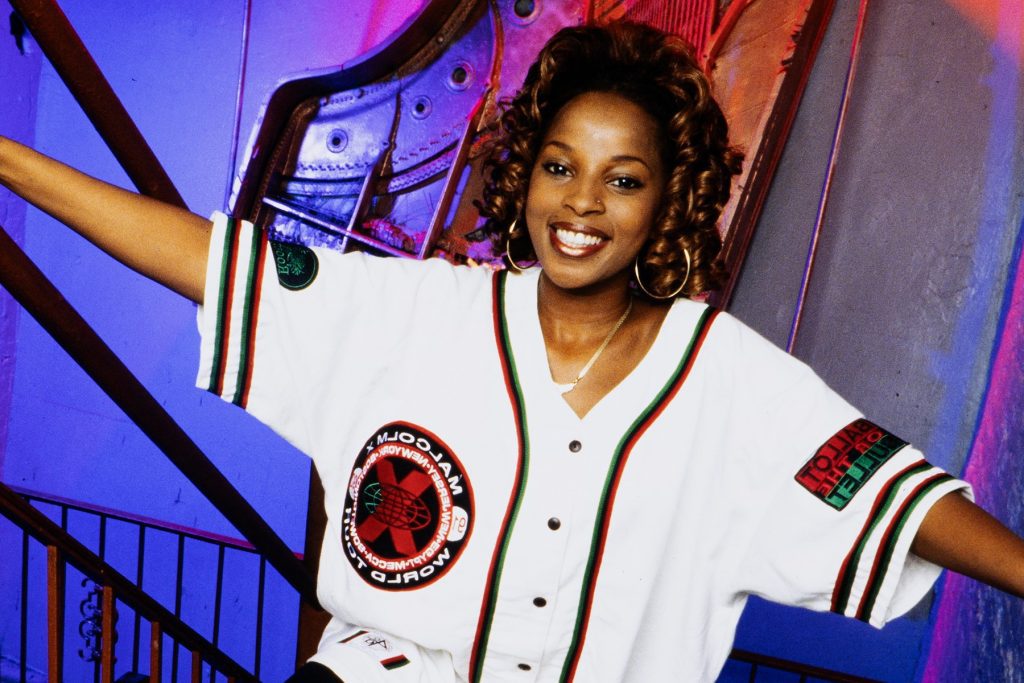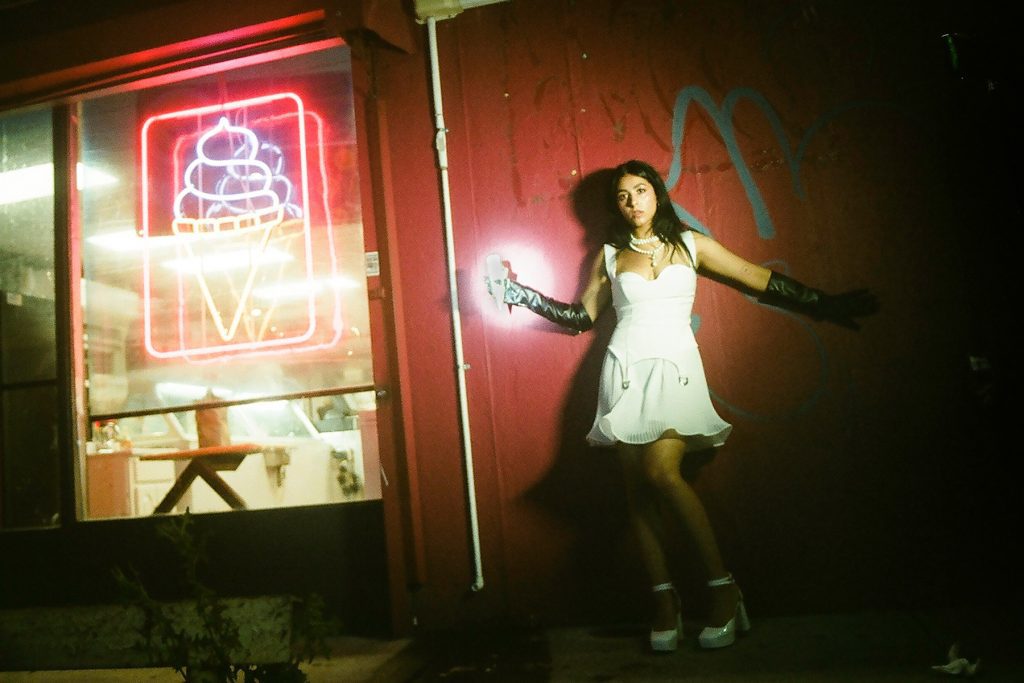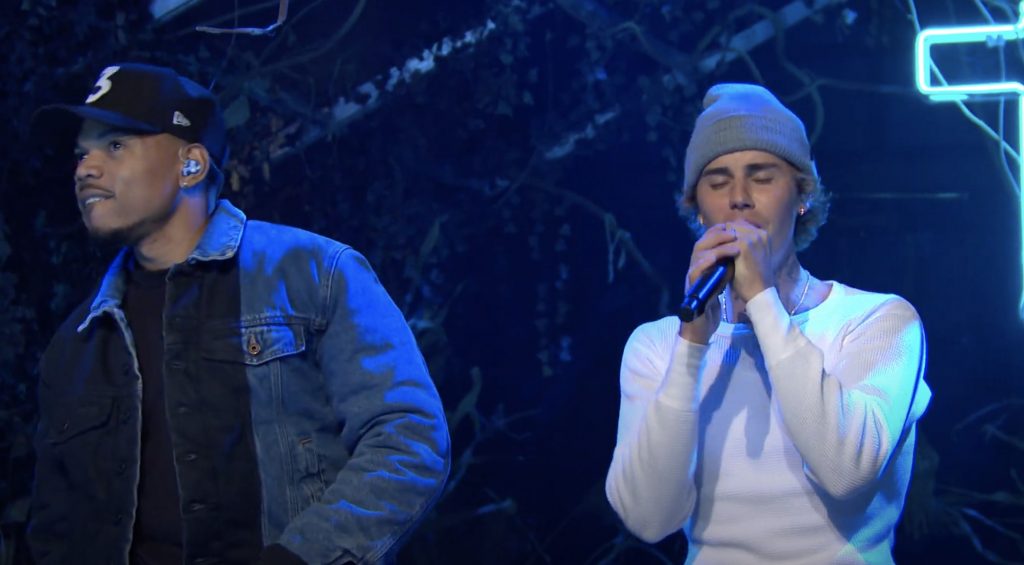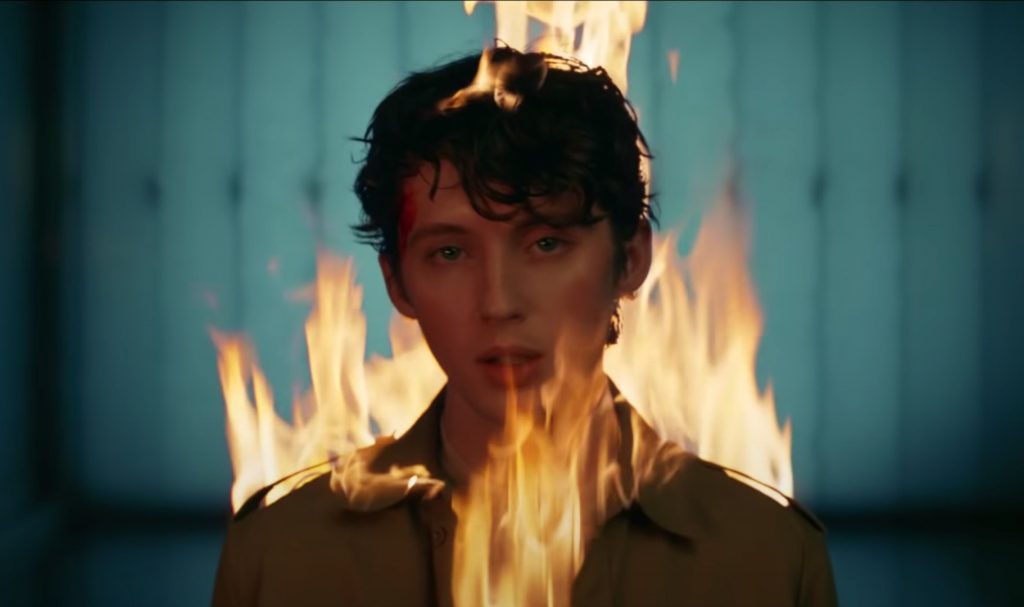
Mary J. Blige’s ‘My Life’ Documentary: 8 Things We Learned
Mary J. Blige has a long, illustrious career, riddled with Top Ten hits, million-selling albums, Grammys, and Oscar nominations. But there’s one project that has particular importance for her: “I have 13 albums, but my second, My Life, is my most important,” she says in a new documentary commemorating the LP, originally released in 1994. Blige sees My Life not only as the moment she “started speaking to my fans” but also as “the place where I survived.” That narrative of survival, of walking through the fire only to emerge stronger on the other side, has been central to her career ever since; few performers are as open about their struggles and their psychic toll as Blige.
Following the success of her 1992 debut, What’s the 411?, Blige tightened her creative circle, working primarily with producers P. Diddy and Chucky Thompson on My Life‘s 17 tracks. She made her soul references more flagrant — prominent samples of soothing R&B litter the album, offering a guiding rail for older listeners — even as her writing became more pointed and blunt: Much of My Life plays like a therapy session, as Blige confesses crippling dependence and tries to coach herself into healthier ways of thinking. As she puts it on the album closer “Be Happy,” “how can I love somebody else if I can’t love myself enough to know when it’s time to let go?”
blogherads.adq.push(function () {
blogherads
.defineSlot( ‘medrec’, ‘gpt-dsk-tab-article-inbody1-uid0’ )
.setTargeting( ‘pos’, [“mid-article”,”mid”,”in-article1″,”mid-article1″] )
.setSubAdUnitPath(“music//article//inbody1”)
.addSize([[300,250],[620,350],[2,2],[3,3],[2,4],[4,2]])
;
});
The My Life documentary, courtesy of Amazon Studios (it hits the streaming service today), enlists Blige’s family members, former collaborators (Thompson, P. Diddy), prominent record executives (Andre Harrell, Jimmy Iovine), famous actors and actresses (Tyler Perry, Taraji P. Henson), and fellow artists (Method Man, Nas, Alicia Keys) to talk about the singer’s journey from the projects to the pinnacle of the music industry. But much of the film’s heft comes from Blige herself, who is as frank about her struggles on camera as she is in her songs.

Amazon Studios
1. Blige was exposed to violence, alcohol, and drugs at an early age.
Throughout her long career, Blige has sung repeatedly about overcoming obstacles and transcending trauma. The My Life documentary foregrounds that emotional distress. “I never smiled when I was a teenager,” Blige explains. “I think [what] people don’t understand about the families that live in the projects, is that it’s like a prison… people are just suffering…. I remember hearing women being beaten. My mother was one of those women. I carried her pain. I carried the neighbors’ pain. I carried people all over the environment’s pain. And I carried my own pain.”
Before singing became a viable career option, Blige says substance abuse was one of her primary escapes from her day-to-day life. “You turn to anything that can numb you from feeling sad, from feeling depressed, from feeling hatred, from feeling self-hatred,” Blige tells the camera. “So you turn to substance abuse, whatever makes you feel good… we went to the pier… and we would drink our pain away.”
2. Seventies soul served as an escape hatch.
Much of My Life is built around samples or interpolations of classic R&B from the 1970s and early 1980s: Barry White’s “It’s Ecstasy When You Lay Down Next to Me,” Curtis Mayfield’s “Give Me Your Love,” Al Green’s “Free at Last,” the Mary Jane Girls’ “All Night Long.” One song in particular, Roy Ayers’ “Everybody Loves the Sunshine,” had particular resonance for Blige when she was young. “There was something in it that cracked open everything for me,” she says. “That was the first music as a child that stuck with me. It made me forget that we lived where we lived. That sound used to drive me nuts… something about ‘my life in the sunshine,’ that record made me feel like I could have something.” Ayers’ song eventually served as the source material for My Life‘s title track.
blogherads.adq.push(function () {
blogherads
.defineSlot( ‘medrec’, ‘gpt-dsk-tab-article-inbody2-uid1’ )
.setTargeting( ‘pos’, [“mid-article2″,”mid”,”in-article2″,”mid-article”] )
.setSubAdUnitPath(“music//article//inbody2”)
.addSize([[300,250],[300,251],[620,350],[2,4],[4,2],[3,3]])
.setLazyLoadMultiplier(2)
;
});
3. She got her first break thanks to Jeff Redd.
Blige was “never afraid to sing,” according to one relative. As a teen, she paid to record a demo at a local mall, cutting a rendition of Anita Baker’s Quiet Storm classic “Caught Up in the Rapture,” a Top Ten R&B single from the 1980s. When Blige brought it home and played it for her family, her stepfather liked it enough to pass it to Jeff Redd, who had a brief moment of fame with the New Jack Swing hit “You Called & Told Me” in the early 1990s. (Redd and Blige’s stepfather once worked together at the assembly line at a General Motors plant.) “When I heard the demo at the time, I heard the pain of a generation,” Redd recalls.
He succeeded in getting the tape to Uptown Records, which was led by Andre Harrell at the time. Harrell was stunned by the demo, and drove to meet Blige the next day in Yonkers. To audition for him, Blige sang Baker’s entire Rapture album.
4. Blige was part of a shift in the sound and style of R&B.
After decades of primacy, R&B was under threat in the late 1980s as hip-hop took the nation by storm. R&B started to adapt by borrowing from the feisty younger genre, leading to fusions like New Jack Swing and Hip-Hop Soul. “Mary was the first to bring her own R&B-based hip-hop swag to the boy-based rap scene,” explains Danyel Smith, the former editor-in-chief of Vibe. At the time, “there wasn’t a lot of R&B singing over hip-hop tracks,” adds the rapper Method Man. Hearing Blige’s music, he continues, means “we can do our dances to this, we can groove to this, this don’t sound like our mama’s music. But [Blige] is singing, so mama might like it too.”
5. Blige bucked industry trends.
“At that time, the rule for black female artists was: sing loud and smooth yourself out,” Smith notes. But despite Blige’s love for Anita Baker, she had little interest in replicating that path into the music industry. P. Diddy, who worked closely with Blige at Uptown Records, was enthralled with her “raspy, gutter” tone, as was Taraji P. Henson. “I saw something [in Blige] that we’d never seen before but knew existed,” the actress remembers. “She gave us a face, she gave us a name, she gave us a story, she humanized us.”
A young Alicia Keys felt similarly inspired by Blige’s approach. “I started to feel good about who I am, about being a little rougher around the edges, about having a strong point of view,” Keys says. “I felt like I could be who I actually was and that was cool.” “We didn’t see that [a lot],” she adds, and unfortunately, “we still don’t get to see that a lot.”
blogherads.adq.push(function () {
blogherads
.defineSlot( ‘medrec’, ‘gpt-dsk-tab-inbodyX-uid2’ )
.setTargeting( ‘pos’, [“mid”,”mid-articleX”,”in-articleX”,”mid-article”] )
.setSubAdUnitPath(“music//article//inbodyX”)
.addSize([[300,250],[300,251],[3,3],[620,350]])
.setLazyLoadMultiplier(2)
;
});
6. Blige’s relationship with the singer K-Ci Hailey of Jodeci was imploding as she was recording My Life.
When Blige signed to Uptown Records and sold more than two million copies of her debut album, What’s the 411?, by spring of 1993, she quickly became one of R&B’s important new voices. The same could be said of her label-mates, the group Jodeci, who served up their hip-hop soul with a potent side of gospel fervor. Blige embarked on a relationship with Jodec’s K-Ci, but, she says, “neither one of us could handle the success of our lives.”
“It became very dark, the whole thing, and abusive,” she continues. “There was a lot of manipulation,” to the point where she decided, “I’m gonna dumb myself all the way down, play myself all the way down, so I don’t think I’m special, so I can be with you.” One of Blige’s friends recalls a moment when K-Ci showed up, “filled with rage… and he started to physically attack her.” (K-Ci is not featured in the documentary.) “I’ve had to physically fight for my life a lot,” Blige says.
As Blige’s love life fell apart, she says it exacerbated her substance abuse, and she started to enter a downward spiral. “That depression from that relationship rewinded life and brought back a whole lot of other stuff, things that happened to me as a child, as a little girl,” she explains.
“My life is not in the sunshine,” the singer adds later. “My life is hell. My life is me not being able to get things out of my head that happened to me, me not being able to get being molested out of my head. Other things that happened that I will not discuss — so many things happened to a little girl.”
7. Blige felt suicidal urges during the recording of My Life.
From the outside, Blige looked like she had it made — a major label deal, a double-platinum debut, a second album on the way. But her troubles were compounding to the point that, while recording her sophomore album, she says she contemplated suicide. “I was just trying to drink my life away, take drugs til I die, whatever it was,” she remembers. “Most of the time I was just depressed and I didn’t want to live.” As a result, she sees My Life as “probably my darkest album.” “I’ve had plenty of dark times since then,” she adds, “but this was a turning point, a decision I had to make, either live or die.”
Several of Blige’s fans show up in the documentary to tell her that she helped them battle tough situations in their own lives, but the singer actually sees the relationship the other way around. The fans, she says, “make me remember that I’m not the only one going through the things I’m going through.”
8. A near-religious experience convinced Blige not to kill herself.
blogherads.adq.push(function () {
blogherads
.defineSlot( ‘medrec’, ‘gpt-dsk-tab-inbodyX-uid3’ )
.setTargeting( ‘pos’, [“mid”,”mid-articleX”,”in-articleX”,”mid-article”] )
.setSubAdUnitPath(“music//article//inbodyX”)
.addSize([[300,250],[300,251],[3,3],[620,350]])
.setLazyLoadMultiplier(2)
;
});
Blige still remembers the exact moment she stopped “falling completely off the planet.” “I was sitting in my living room, and I had been up all night long,” she recalls. “It looked like the window opened and all these clouds came in. I was just high out of my mind. My heart started racing. It was a Sunday morning, and I always feel strange on a Sunday morning, I always feel like God can really see what I’m doing. I was like, ‘I don’t want to do this. I gotta stop doing this.’ You choose life or you choose death. I chose life.”




